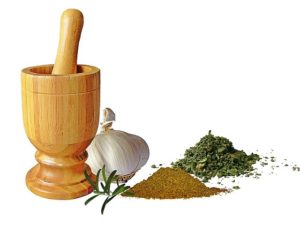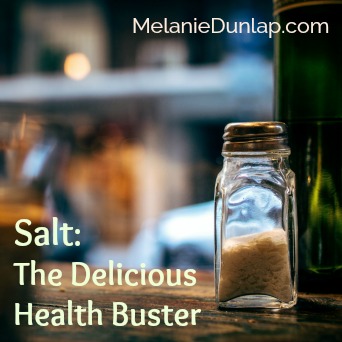Yes, there are lots of different kinds of salt: pink, iodized, kosher, sea, etc. They come from salt mines in the ground, or from evaporating the water out of salt water. What they all have in common is that infamous mineral that I’m going to talk about below: sodium.
In food, salt is used for both flavour, and as a preservative. Salt helps to preserve food by drawing out the water that bacteria and mold need to grow. Hence, preserving the food from spoiling as quickly.
Would you be surprised to know that 75% of our salt intake comes not from the salt shaker? It comes from processed foods. Snacks like chips, pretzels and salted nuts are included here. But so are canned foods, pickled foods, boxed foods, deli meats, restaurant food, and fast food.
Salt vs. Sodium
Salt is actually “sodium chloride.” It’s about 40% sodium and 60% chloride; this means that one teaspoon of salt (5,000 mg) contains about 2,000 mg of sodium.
Sodium itself is not that bad! In fact, it’s an essential mineral and an important electrolyte in the body. It helps with fluid balance, and proper nerve and muscle function.
Too much sodium is not great! Regularly getting too much sodium can increase your risk of high blood pressure, stroke, heart attack, stomach cancer, and kidney stones.
That one teaspoon with about 2,000 mg of sodium is pretty much your entire day’s worth of sodium. People who eat a lot of pre-made, packaged foods tend to eat way too much sodium. In fact, 90% of American adults consume more than 2,300 mg per day. The average intake is closer to 3,400 mg of sodium per day!
If you’re at high risk for those conditions, then you probably shouldn’t have more than just 1,500 mg of sodium each day.
Sodium and high blood pressure
How does salt increase blood pressure? And what does that have to do with it making you thirsty?
Well, there actually is something called “salt-sensitive high blood pressure.” Here’s how it works:
The salt you eat gets absorbed quickly and goes into the blood.
Your body recognizes that the blood is too salty, so more water is added to the blood to dilute it (i.e. with thirst signals to make you drink more fluid). More water in the blood means more fluid your heart needs to pump and more fluid pushing against the walls of your vessels. It also sends more blood to the kidneys so the sodium can be filtered out into the urine.
This is how too much sodium increases your blood pressure. Increased blood pressure also puts a strain on your kidneys and other sensitive vessels, including critical vessels in your brain and heart.
You can counteract this effect by reducing the amount of salt you eat (from both processed foods and the salt shaker). In fact, limiting salt intake has been shown to slightly reduce blood pressure.
Tip: You can reduce high blood pressure by eating more whole foods, and more mineral-rich plant foods. **Make an appointment with your wellness coach to get help with this and other lifestyle changes you can make to reduce your blood pressure**
Conclusion
If you are healthy and eat mostly whole, unprocessed foods, then you probably don’t need to worry about your salt intake. Feel free to add a bit of salt during cooking or at the table for flavour.
If your doctor has told you to reduce your salt or sodium intake, then you can do this by reducing your intake of processed foods, adding less salt to the food you make, and eating more plant-based foods.

Recipe (Low-Sodium Spice Mix): Italian Spice Mix
1 tbsp dried oregano
1 ½ tbsp dried basil
1 tbsp dried parsley
1 tbsp dried thyme
½ tbsp onion powder
½ tbsp garlic powder
Mix all ingredients and place in a sealed container. Sprinkle where you would normally use salt. This is especially good with Italian-style dishes.
Serve & enjoy!
Tip: Feel free to play around with the ingredients. If you hate oregano, leave it out. If you love garlic, add more.
